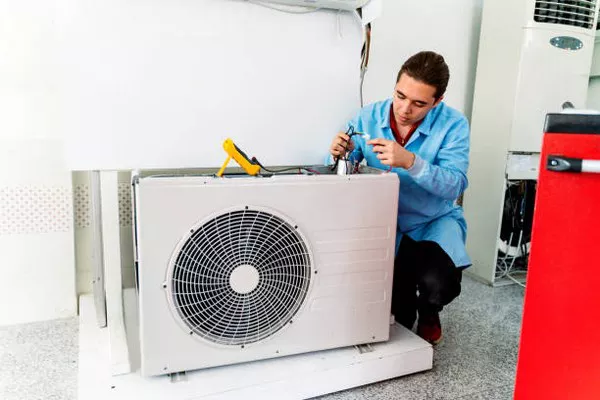In the realm of industrial machinery and air compression systems, the direct drive compressor stands out as a crucial innovation. This technology represents a significant advancement over traditional belt-driven compressors, offering enhanced efficiency and reliability in various applications. To grasp the significance of direct drive compressors, it is essential to delve into their design, operation, advantages, and practical uses.
What is a Direct Drive Compressor?
A direct drive compressor is a type of air compressor where the motor that drives the pump is directly connected, without the use of belts or pulleys. Unlike belt-driven compressors, which transfer power from an electric motor to the pump via a belt and pulley system, direct drive compressors have a motor that is directly coupled to the pump’s crankshaft or rotor shaft. This direct connection eliminates the need for intermediary components, resulting in a more compact and efficient design.
Design and Operation
Direct drive compressors typically feature a motor that is integrated into the compressor pump assembly. The motor shaft and the pump shaft are directly coupled, often through a coupling or flange connection. This direct coupling ensures that the motor’s rotational energy is transferred directly to the pump, without any loss of efficiency that might occur in belt-driven systems due to belt slippage or tension issues.
The design of a direct drive compressor also contributes to its compactness and reduced maintenance requirements. By eliminating belts and pulleys, manufacturers can streamline the size and complexity of the compressor unit, making it easier to install in various industrial and commercial settings. Additionally, direct drive systems tend to produce less noise compared to belt-driven compressors, as there are fewer moving parts and no belts to generate frictional noise.
Advantages of Direct Drive Compressors
Efficiency: Direct drive compressors are known for their high efficiency. The direct transmission of power from the motor to the pump reduces energy losses, resulting in greater overall efficiency and lower operating costs over time.
Reliability: With fewer moving parts and no belts that can wear out or require regular tension adjustments, direct drive compressors offer enhanced reliability and durability. This makes them particularly suitable for continuous operation in demanding industrial environments.
Compact Design: The absence of belts and pulleys allows for a more compact and space-efficient design. Direct drive compressors occupy less floor space and can be more easily integrated into existing production lines or workshops.
Lower Maintenance Requirements: Maintenance tasks such as belt replacement and tension adjustments are eliminated with direct drive compressors, reducing downtime and maintenance costs. This simplicity in design also translates to fewer potential points of failure.
Improved Performance: The direct coupling of the motor and pump enables quicker response times and better control over output pressure and flow rates. This responsiveness is crucial in applications where precise air delivery is necessary.
Reduced Noise Levels: As mentioned earlier, direct drive compressors tend to operate more quietly than their belt-driven counterparts. This is advantageous in settings where noise reduction is a priority, such as in laboratories or office environments.
Environmental Benefits: Higher efficiency means direct drive compressors consume less electricity to achieve the same output, resulting in reduced carbon emissions and lower environmental impact over their operational lifespan.
Applications of Direct Drive Compressors
Direct drive compressors find application across a wide range of industries and settings where compressed air is essential for operations. Some common applications include:
Manufacturing: Used in pneumatic tools, assembly lines, and automated production processes where reliable and consistent air pressure is required.
Construction: Powering pneumatic tools on construction sites, such as jackhammers, nail guns, and paint sprayers.
Automotive: Air compressors are integral to automotive repair and maintenance tasks, from inflating tires to operating pneumatic tools in repair shops.
Medical: Direct drive compressors are used in medical and dental offices for powering instruments and equipment where clean, dry compressed air is crucial.
Food and Beverage: In food processing facilities, air compressors are used for packaging, bottling, and handling operations where maintaining air quality is essential.
HVAC: Heating, Ventilation, and Air Conditioning (HVAC) systems rely on compressed air for control systems, pneumatic actuators, and air handling units.
Energy Sector: Direct drive compressors play a role in power generation, natural gas processing, and other energy-related applications where compressed air is needed for operation and maintenance.
See Also How To Use Stanley Fatmax Air Compressor
Future Trends and Innovations
As technology advances, the evolution of direct drive compressors continues to focus on enhancing efficiency, reducing environmental impact, and improving reliability. Innovations such as variable speed drives (VSD) allow compressors to adjust their speed according to demand, further optimizing energy usage and operational costs. Additionally, advancements in materials and manufacturing techniques contribute to lighter and more durable compressor designs, expanding their usability across diverse industries.
The integration of smart technologies and IoT (Internet of Things) capabilities into direct drive compressors enables remote monitoring, predictive maintenance, and real-time performance optimization. These features not only improve reliability by detecting potential issues before they cause downtime but also provide data-driven insights for enhancing operational efficiency.
In conclusion, direct drive compressors represent a significant advancement in air compression technology, offering superior efficiency, reliability, and versatility compared to traditional belt-driven systems. Their compact design, reduced maintenance requirements, and quieter operation make them ideal for a wide range of industrial, commercial, and institutional applications. As industries continue to prioritize energy efficiency and sustainability, direct drive compressors are expected to play an increasingly pivotal role in meeting these goals while supporting essential operations worldwide.
Related Topics

